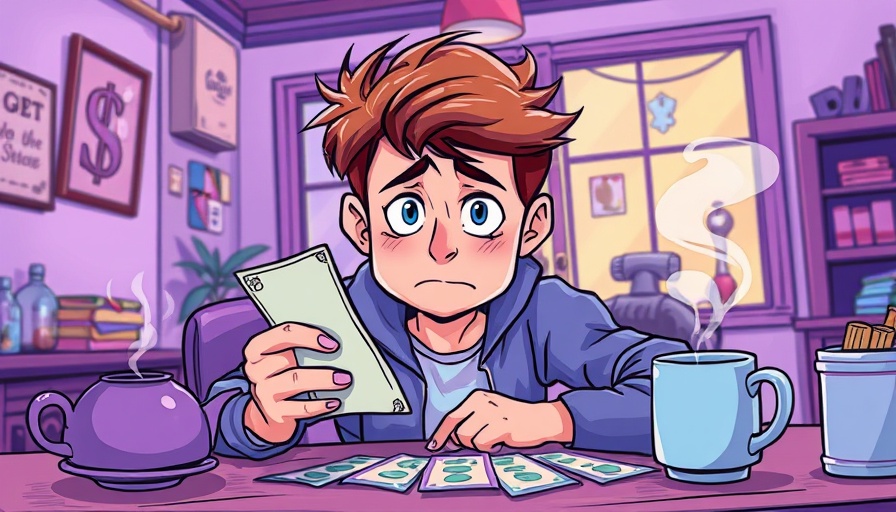
Redefining Financial Struggles: It's Personal
When we think of financial issues, we typically envision someone in dire straits, perhaps unable to afford basic necessities. Yet, financial struggle can wear many faces, as illustrated by the experience shared in Kate Pejman's article. Despite appearing to live a successful life with a six-figure salary and homeownership in a challenging market, she faced immense pressure when her financial arrangements fell apart. This reality reveals a crucial truth: financial distress can linger beneath the surface, hidden behind a facade of success.
Supportive Words: What To Say Instead?
Simplistic motivational phrases often cloud the complexity of someone’s financial burden. Instead of saying, “Trust the universe,” consider a more empathetic approach. Ask not just how the person is doing, but how you can genuinely support them. Instead of urging them to remain strong, remind them that it’s okay to be vulnerable and that their feelings are valid.
Moreover, affirm with, “I see you’re struggling, how can I help?” This shifts the focus from vague encouragement to actionable support, fostering a sense of community.
The Real Consequences of Financial Stress
Financial anxiety doesn’t just affect bank accounts—it can seep into every aspect of life, including mental well-being. Studies show that prolonged financial stress correlates with anxiety, depression, and even chronic illnesses. It can cause emotional distress, leading individuals to feel isolated and misunderstood. Recognizing this interconnectedness of financial health and mental well-being is essential for anyone looking to create a supportive environment.
Finding Meaning in Financial Struggles
The takeaway from Pejman's experience is the necessity of understanding that not all struggles lead to lessons. Sometimes, they simply exist, and it’s essential to accept that. The pressure to find meaning can create added stress. People often think they must navigate their hardships perfectly, leading to feelings of failure if they don't—and that’s a misconception worth breaking.
Coping Mechanisms and Practical Insights
Coping with financial stress can seem daunting, yet there are tangible ways to alleviate the burden. Creating a financial action plan can help demystify money management. Start by budgeting each expense and setting small, achievable goals. Seeking advice from financial advisors can also offer clarity on managing debt and leveraging resources effectively.
Additionally, incorporating mindfulness practices can assist in managing anxiety associated with financial hardship. Techniques such as meditation and journaling can help reframe stressors and stabilize emotional responses, underscoring the value of mental health during challenging times.
Engaging with the Broader Community
Financial struggles often feel isolating, but engaging with community resources and support groups can help break the silence. Local organizations often offer workshops on financial literacy, providing invaluable insights into budgeting, savings, and managing debt. Not only does this enhance awareness, but it also builds bonds among individuals facing similar challenges. Remember, shared experiences can reduce isolation and foster resilience.
Actions You Can Take Today
Taking steps toward financial security doesn't have to be overwhelming. Start by identifying one small action you can take this week—whether it's setting a budget, discussing finances with a trusted friend, or seeking out community resources. Each step forward is significant, even if it feels small.
Recognizing that financial struggles are multi-faceted encourages us to address them holistically. Whether it’s through talking, listening, or taking action, cultivating supportive environments can help transform our understanding of what it means to struggle in a financially pressured world.
Final Thoughts
Navigating financial stress is never easy, but connecting with others and embracing vulnerability can foster genuine support. Share this article with someone facing financial stress to encourage open dialogue about the challenges and depth of their experience. Remember, honest conversations about financial struggles can pave the way for understanding and healing. Let’s work together to break the silence on financial hardships and build a supportive community for all.
 Add Row
Add Row  Add
Add 




Write A Comment